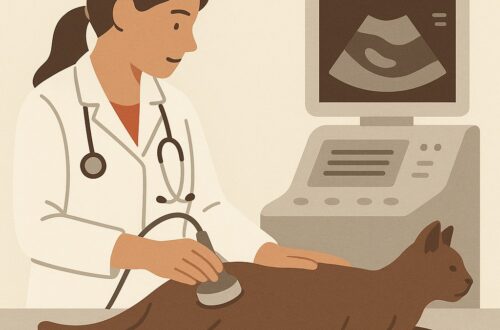The eyes are undeniably intricate structures. They have so many components with truly vital functions. The eyelids help protect the gorgeous orbs. But what happens when the eyelids actually damage the eyes? Entropion is an eyelid condition that can do just that! This week I share detailed information about this irritating problem. I hope you find this post eye-opening. Happy reading!
Entropion – What is it?
Entropion is an eyelid problem characterized by the inward rolling of the upper and/or lower eyelid margin. The upper eyelid (called the superior palpebra) is affected less commonly than the lower one (called the inferior palpebra). This condition may involve part or all of one or more eyelids. Entropion is often congenital in nature, but some pets develop this problem as they age. The congenital form typically affects both eyes. The affected area is typically restricted to only a focal part of the eyelid margin. However, severely affected patients may have the whole length rolled inward.

Some dog breeds are over-represented for the congenital form:
- Chow Chow
- Shar Pei
- English Bulldog
- Irish Setter
- Labrador retriever
- Golden retriever
- Saint Bernard
Additionally, some golden Retrievers, Rottweilers, Chesapeake Bay retrievers, and Great Danes have the hereditary form of this condition. Their inward eyelid rolling develops as they age. Entropion is uncommon in cats, but some Persians do develop this condition.
Entropion – How is it diagnosed?
Documentation of the inward rolling of an eyelid margin is straightforward. Affected pets may also have other clinical signs, including:
- Epiphora (excessive tearing)
- Blepharospasm (involuntary closing of the eye)
- Sensitivity to light
- Eye discharge
- Conjunctivitis
- Corneal ulceration
A veterinarian will perform a complete physical examination, including an extensive evaluation of the eyes. If the affected eye(s) appear reddened, a veterinarian should perform three simple and non-invasive tests to further evaluate the health of the eyes. Veterinary professionals refer to these tests affectionately as “The Big 3” – they are:
- Fluorescein dye test – used to document corneal ulceration
- Tonometry – used to measure intra-ocular pressure (pressure inside the eye)
- Schirmer teat test – used to measure tear production

Entropion – How is it treated?
There are several minimally invasive surgical techniques for treating this condition in our furry companions. Many primary care veterinarians are comfortable performing these eyelid surgeries. Pet parents may find consulting with a board-certified veterinary ophthalmologist uniquely beneficial. Such a partnership will help to ensure a pet receives an accurate diagnosis and the best surgical method for correction.

The take-away message about entropion…
Entropion is a common eyelid problem in dogs. The hallmark feature of this condition is an inward rolling of part or all of the eyelid margins. Affected eyes are often red, sensitive, and produce excessive volumes of tears. A veterinarian can perform one of several minor surgical procedures to correct this condition. For patients with complicated entropion, consultation with a board-certified veterinary ophthalmologist is recommended.
To find a board-certified veterinary ophthalmologist, please visit the American College of Veterinary Ophthalmologists.
Wishing you wet-nosed kisses,
cgb






